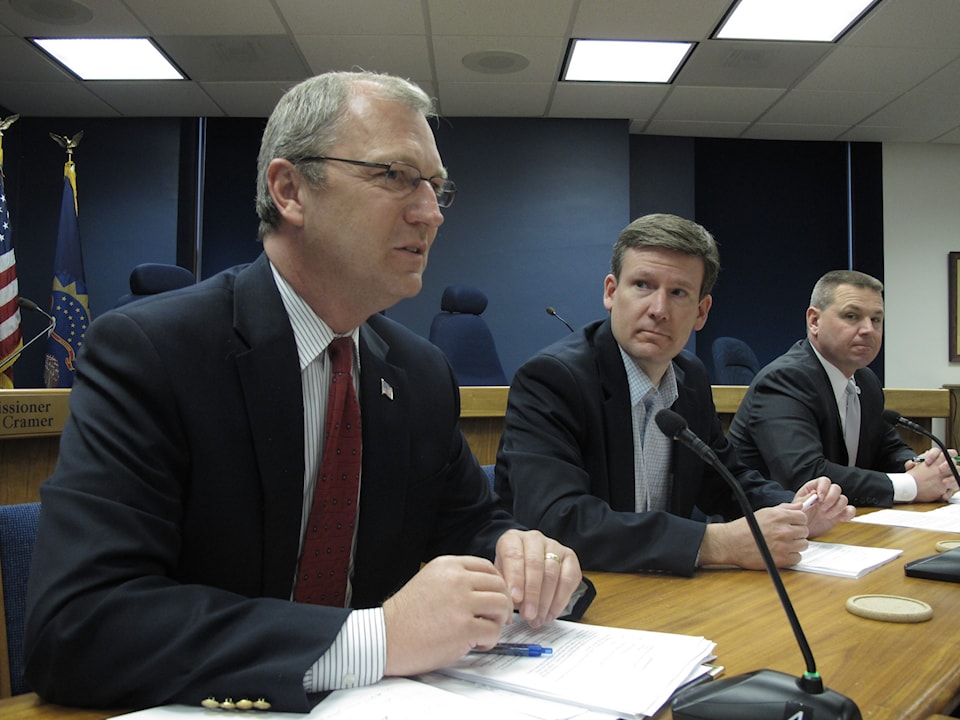CALGARY — It’s been a rough couple of weeks for crude oil shippers and its not helping their plans to build new, multibillion-dollar pipelines.
Some 4.5 million litres of crude gushed from Plains Midstream Canada’s Rainbow pipeline in Northern Alberta on April 29. And in the past week, much smaller quantities of oil have spilled from a TransCanada Corp. (TSX:TRP) line in North Dakota and an Enbridge Inc. (TSX:ENB) line in the Northwest Territories.
The spate of spills has weighed on an already fierce debate over whether two controversial oil pipelines can be built safely: TransCanada’s Keystone XL pipeline to the U.S. Gulf Coast and Enbridge’s Northern Gateway pipeline to Canada’s West Coast.
The U.S. State Department is in the midst of reviewing TransCanada’s $13-billion Keystone XL proposal, which would extend a Midwest-bound line to Texas refineries and nearly double its capacity.
Last Saturday, 79,500 litres of crude spilled in North Dakota from a pump station along the base Keystone system, which TransCanada brought into service last summer.
The incident raised alarm bells for environmentalists fighting the Keystone XL expansion, including Susan Casey-Lefkowitz, international program director with the Natural Resources Defense Council in Washington.
“I think that the arguments about Keystone XL only grow stronger as we see more and more spills happen,” she said.
Many leaks take place on decades-old systems that have corroded over the years. But the taps opened on Keystone’s first phase less than a year ago, and it has already had 11 mostly minor spills, Casey-Lefkowitz said.
“And so I think that the fact that we’ve seen so many spills . . . is an even clearer indication that we need to put a hold on the current Keystone XL pipeline permitting process until we can figure out these safety issues.”
TransCanada spokesman Terry Cunha noted that the issue was not with the pipeline itself, but with a faulty valve at a pump station. The spill was confined to TransCanada property and four-fifths of the crude has since been cleaned up.
The line is set to come back into service some time in the next 24 to 48 hours, he added.
TransCanada’s safety response systems worked exactly they way they were supposed to when they detected a drop in pressure, Cunha said.
“Within nine minutes, we were able to have that system shut down to ensure no further crude oil was being released.”
Environmentalists and industry disagree over whether what’s inside the pipeline has anything to do with its safety. Casey-Lefkowitz said diluted oilsands bitumen eats away at the pipe, making it weaker and more prone to spills.
Cunha said, however, that the stuff inside of Keystone is no more corrosive than crude from Saudi Arabia, California or Venezuela.
Enbridge is another major Canadian crude transporter whose safety record has been in the spotlight in recent days. It plans to build a pipeline between Alberta and the B.C. coast, where the crude would be loaded onto tankers and sold in lucrative Asian markets.
Representatives from several northern B.C. First Nations descended on Calgary on Wednesday to speak out against Northern Gateway at Enbridge’s annual meeting.
“We won’t trade the safety of our rivers, lands and fish that are our lifeblood. Enbridge knows that it can’t guarantee there will be no oil spill into our rivers,” said Chief Jackie Thomas of the Saik’uz First Nation.
“With all the technology and know-how in the world, they can’t eliminate the risk of spills.”
Last summer, an Enbridge pipeline spilled millions of litres of crude into Michigan’s Kalamazoo River. Its U.S. affiliate said Thursday that it will spend US$286 million to replace portions of the ruptured line, called Line 6B.
Earlier this week, Enbridge’s Normal Wells line suffered a small leak, spilling 636 litres of crude.
At a rally in Prince Rupert, B.C., on Thursday night, about half of the 500 demonstrators raised their hands when asked if they would use civil disobedience to stop Northern Gateway, according to a statement disseminated by environmental group Forest Ethics.
Enbridge chief executive officer Pat Daniel, hoarse after fending off criticism for nearly two hours, told reporters the industry’s safety record is excellent, despite the string of incidents.
“On a worldwide basis, 80 per cent of the crude oil is transported by tanker, and some by rail of course,” he said.
“But the safest way to move it via pipeline.”
